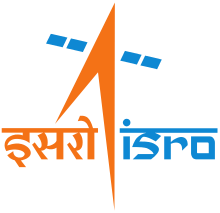X-ray Polarimeter Satellite
The X-ray Polarimeter Satellite (XPoSat) is a planned space observatory to study polarisation of cosmic X-rays. It is planned to be launched in 2021, and to provide a service time of at least five years.[2]
| Mission type | space observatory |
|---|---|
| Operator | Indian Space Research Organisation (ISRO) |
| Mission duration | Planned: 5 years[1] |
| Spacecraft properties | |
| Bus | IMS-2 [1] |
| Manufacturer | Raman Research Institute, ISRO |
| Payload mass | 125 kg (276 lb) [2] |
| Start of mission | |
| Launch date | 2021 [2][3] |
| Rocket | PSLV [3] |
| Contractor | ISRO |
| Orbital parameters | |
| Altitude | circular 500 to 700 km[4] |
| Inclination | ≤30° [2] |
| Main detector | |
| Name | POLIX[2] |
| Collecting area | 640 cm2 [2] |
| Wavelengths | X-rays |
| Resolution | 5-30 keV [1][5][2] |
| Instruments | |
| Polarimeter Instrument in X-rays (POLIX) | |
The telescope is being developed by the Indian Space Research Organisation (ISRO) and the Raman Research Institute.
Overview
Studying how radiation is polarised gives away the nature of its source, including the strength and distribution of its magnetic fields and the nature of other radiation around it. XPoSat will study the 50 brightest known sources in the universe, including pulsars, black hole X-ray binaries, active galactic nuclei, and nonthermal supernova remnants.[2][3]
The observatory's scientific payload is the Polarimeter Instrument in X-rays (POLIX), which will study the degree and angle of polarisation of bright astronomical X-ray sources in the energy range 5-30 keV.[1][5] POLIX, a 125 kg (276 lb) instrument,[2] is being developed by the Raman Research Institute.[3][4][5][6] Its specific science objectives are to measure: [6]
- the strength and the distribution of magnetic field in the sources
- geometric anisotropies in the sources
- their alignment with respect to the line of sight
- the nature of the accelerator responsible for energising the electrons taking part in radiation and scattering
The observatory will be placed in a circular low Earth orbit of 500 to 700 km.[2][4]
See also
- Imaging X-ray Polarimetry Explorer
- List of X-ray space telescopes
- X-ray astronomy satellite
- X-ray telescope
References
- ISRO announces Seven Mega Missions. GK Today. 20 May 2019.
- Future Exploration Missions of ISRO. Indian Space Research Organisation (ISRO). Dr. M. Annadurai, Director, ISAC, ISRO. UNCOPUOS 60th Session, Vienna. 2019.
- 5 Unique Space Science Missions That ISRO Will Be Flying in the Near Future. Jatan Mehta, The Wire. 27 June 2019.
- ISRO announces Seven Mega Missions. GK Today. 20 May 2019.
- "Chandrayaan 2 launched: Here are future ISRO missions to space". The Indian Express. 2019-07-22. Retrieved 2019-07-23.
- X-ray Polarimeter Experiment (POLIX). Raman Research Institute. Accessed on 2 August 2019.

